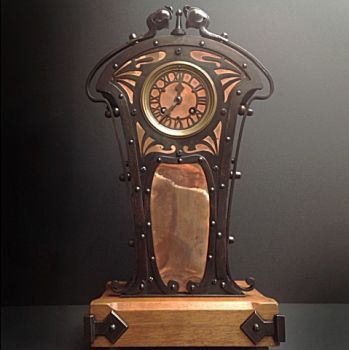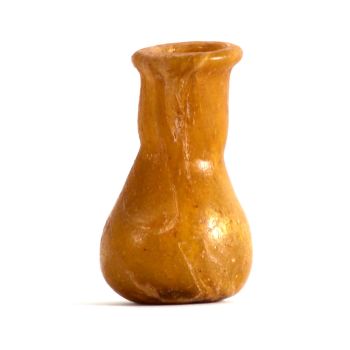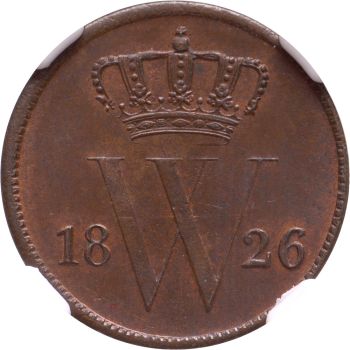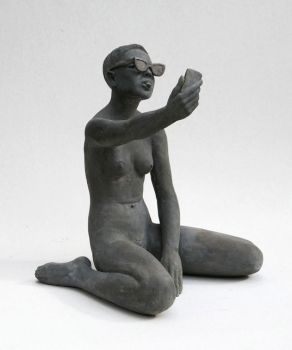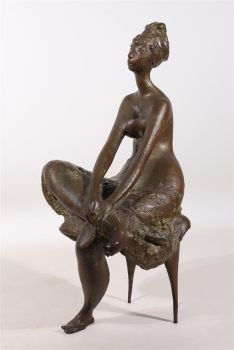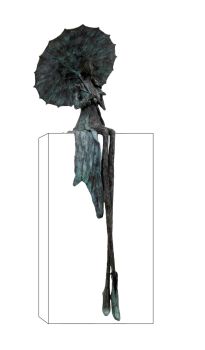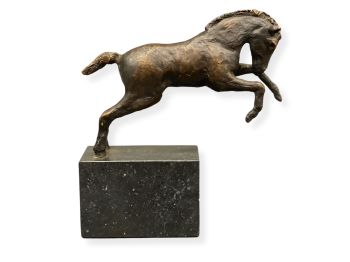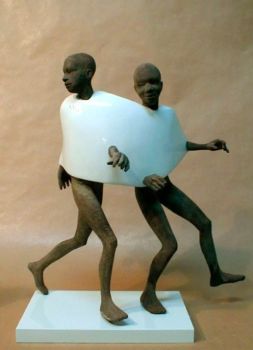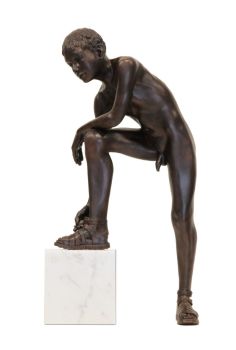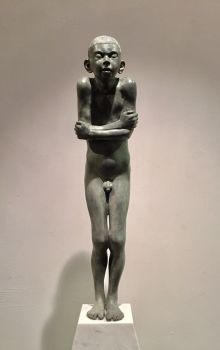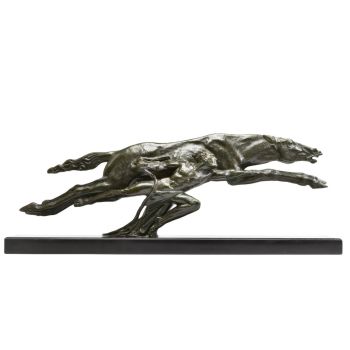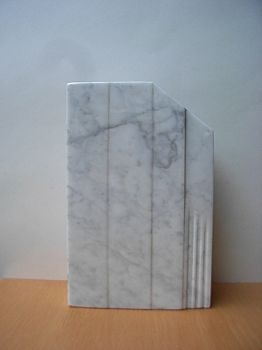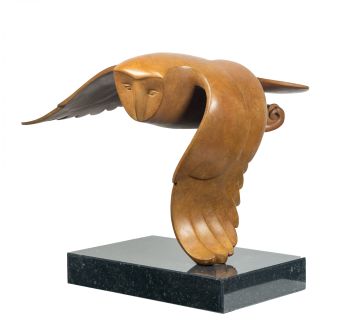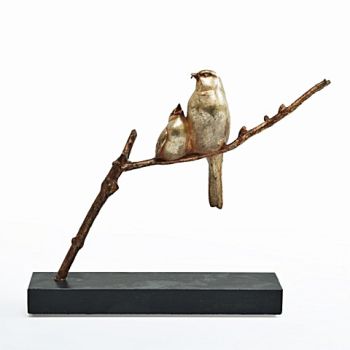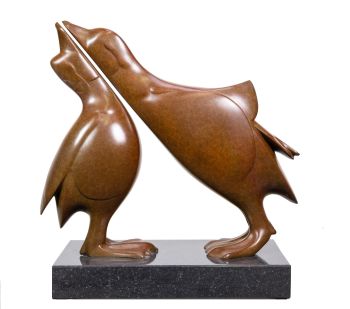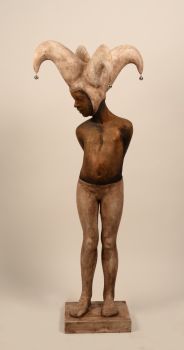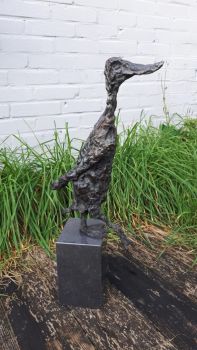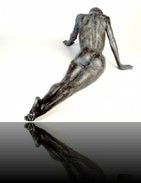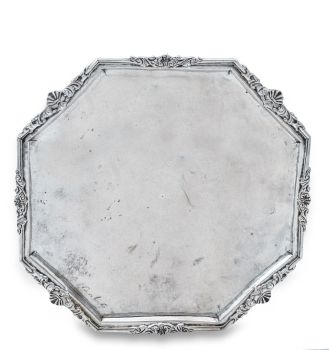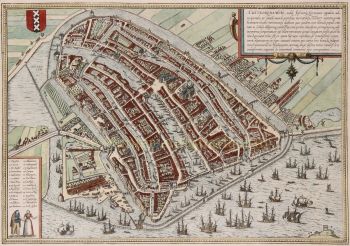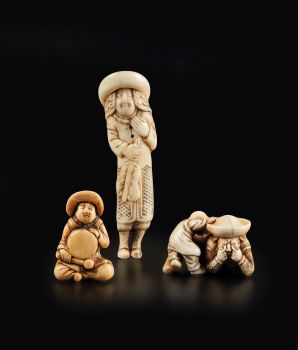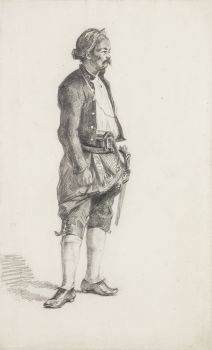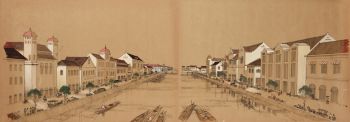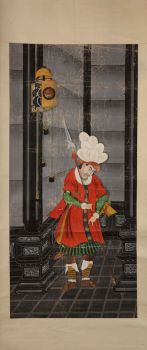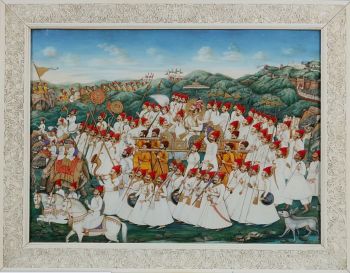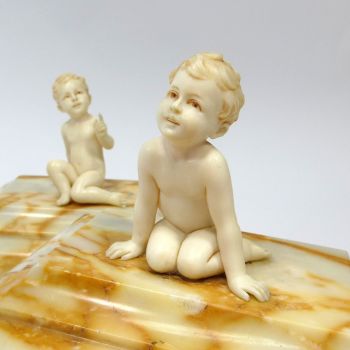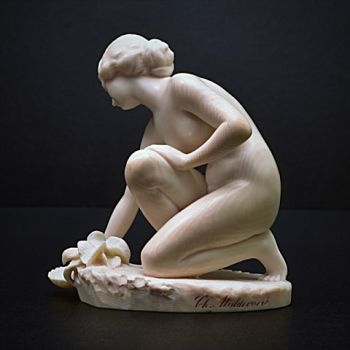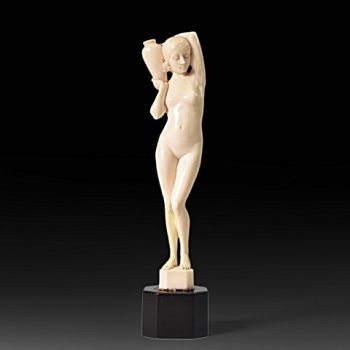Holandeses en miniatura (Netsuke) 1700 - 1900
Artista Desconocido
Zebregs & Röell - Fine Art - Antiques
- Sobre la obra de arte'Dutchmen in Miniature'
The portrayal of the Dutch by Japanese netsuke artists was popular in the 18th century and presents us with a fascinating insight into the Japanese perceptions of things foreign.
Foreigners, Ebisu, were considered bringers of good fortune, possessing magical power because they came from an unknown land and they came to be worshipped as deities. Netsuke of Dutchmen, therefore, were not only depictions of exotic appearances but probably had a talismanic function, such as warding off evil spirits, as well (Japan Envisions the West, 16th-19th Japanese Art from the Kobe City Museum).
Netsuke depicting Dutchmen constitute a clearly recognizable group of netsuke; Dutchmen are long, goggle-eyed, bow-legged, with a large nose and bad teeth. They wear a wide-brimmed hat with a feather or tassel, a bowler-hat or a seaman’s cap, a long coat decorated with Chinese motives of dragons, clouds or waves, over knickerbockers and long buttoned socks in low shoes
The portrayal of the Dutch by Japanese artists was popular from the late 18th and during most of the 19th century and presented us with a fascinating insight into the Japanese perception of things foreign. In many Japanese communities, mainly in the south, based on old myths and accessible wisdom, foreigners coming by ship from the South, were considered bringers of good fortune, possessing magical powers and coming from unknown southern lands. Netsuke of Dutchmen, therefore, were not only depictions of the exotic appearances of Westerners, but probably had talismanic functions as well, such as warding off evil and bringing wealth (for more netsuke of Dutchmen see Uit Verre Streken, November 2018). After Japan had been forced, in the 1850s, to open the country to Western powers, Japan quickly modernized, and the Japanese also started to adopt western clothing. This made an end to the use of and to a large extent to the making of netsuke and inro. - Sobre el artista
Puede suceder que un artista o creador sea desconocido.
Algunas obras no deben determinarse por quién está hecho o por (un grupo de) artesanos. Algunos ejemplos son estatuas de la Antigüedad, muebles, espejos o firmas que no son claras o legibles, pero también algunas obras no están firmadas en absoluto.
También puedes encontrar la siguiente descripción:
•"Atribuido a …." En su opinión, probablemente una obra del artista, al menos en parte.
•“Estudio de….” o “Taller de” En su opinión, una obra ejecutada en el estudio o taller del artista, posiblemente bajo su supervisión
•“Círculo de…” En su opinión, una obra del período del artista que muestra su influencia, estrechamente asociado con el artista pero no necesariamente su alumno.
•"Estilo de …." o “Seguidor de…”. En su opinión, una obra ejecutada al estilo del artista pero no necesariamente por un alumno; puede ser contemporáneo o casi contemporáneo
•"Manera de …." En su opinión una obra al estilo del artista pero de fecha posterior
•"Después …." En su opinión, una copia (de cualquier fecha) de una obra del artista
•“Firmado…”, “Fechado…” o “Inscrito” En su opinión, la obra ha sido firmada/fechada/inscrita por el artista. La adición de un signo de interrogación indica un elemento de duda.
•“Con firma…”, “Con fecha…”, “Con inscripción…” o “Lleva firma/fecha/inscripción” en su opinión la firma/fecha/inscripción ha sido añadida por alguien que no es el artista
¿Está interesado en comprar esta obra de arte?
Artwork details
Related artworks
- 1 - 4 / 12
- 1 - 4 / 24
Artista Desconocido
A superb Indonesian royal gem-set gold overlaid silver betel box19th century
Precio a consultarZebregs & Röell - Fine Art - Antiques
Artista Desconocido
Holandeses en miniatura18th century
Precio a consultarZebregs & Röell - Fine Art - Antiques
Cornelis Anthonisz Theunissen
MUY RARO PRIMER MAPA IMPRESO DE ÁMSTERDAM, UNA CIUDAD EN ASCENSO1544
€ 175.000Inter-Antiquariaat Mefferdt & De Jonge
 curada por
curada porDanny Bree
Artista Desconocido
Dos retratos de estudio de Mas Marco Kartodikromo1900 - 1950
Precio a consultarZebregs & Röell - Fine Art - Antiques
Shiba Kokan
Pintura de un holandés de fantasíaearly 19th
Precio a consultarZebregs & Röell - Fine Art - Antiques
1 - 4 / 24Artista Desconocido
UNA COLECCIÓN DE CUATRO CAJAS BÍBLICAS DE MARFIL DE SRI LANKAN18th century
Precio a consultarZebregs & Röell - Fine Art - Antiques
Artista Desconocido
UN PEQUEÑO NETSUKE DE MARFIL DE UN HOLANDÉS CON UN TAMBOR1750 - 1800
Precio a consultarZebregs & Röell - Fine Art - Antiques
Artista Desconocido
IMPORTANTE Y RARO PINTURA INDIA DE ESTILO DE COMPAÑÍA EN MARFIL QUE REPRESENTA UN DESFILE1850 - 1900
Precio a consultarZebregs & Röell - Fine Art - Antiques
 curada por
curada porDanny Bree
Artista Desconocido
A Dutch colonial Indonesian betel box with gold mounts1750 - 1800
Precio a consultarZebregs & Röell - Fine Art - Antiques
Artista Desconocido
UN NETSUKE MARINE MARFIL DE UN HOLANDÉS CON UN VENTILADOR CHINO18th century
Precio a consultarZebregs & Röell - Fine Art - Antiques
Artista Desconocido
UN NETSUKE DE MARFIL DE UN HOLANDÉS CON UNA COCKEREL18th century
Precio a consultarZebregs & Röell - Fine Art - Antiques
1 - 4 / 24Artista Desconocido
UN NETSUKE MARINE MARFIL DE UN HOLANDÉS CON UN VENTILADOR CHINO18th century
Precio a consultarZebregs & Röell - Fine Art - Antiques
Artista Desconocido
A Surinam-themed Amsterdam long-case clock1746 - 1756
Precio a consultarZebregs & Röell - Fine Art - Antiques
 curada por
curada porGallerease Magazine
1 - 4 / 12























